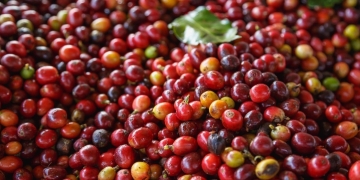
Uganda has launched its first-ever anti-tick vaccine in the country after it has completed the second to last stages of final approval for use.
The vaccine was produced by Ugandan scientists under the National Agricultural Research Organisation (NARO)
Frank Tumwebaze, the Minister of Agriculture, Animal Industry and Fisheries unveiled the anti-tick vaccine to the farmers at NARO’s Mbarara Zonal Agricultural Research and Development Institute (MBAZARDI) on Thursday, October 27.
Tumwebaze said the scientists have put the vaccine’s efficacy so far at 88%.
“The trials will be done in all ecological zones of the country,” Tumwebaze said, describing the event as a great day for the farming fraternity.
“The success of the Anti-Tick Vaccine will also position Uganda among model countries in the fight against ticks which according to the UNFAO impact about 80 percent of the world’s cattle population,” Tumwebaze said.
He added that if this works out as the scientists have assured him, Uganda will have registered a major breakthrough in animal disease control and livestock development generally.
NARO says it has produced a total of 3,000 doses of the candidate vaccines ready for trials and that that they will be carried out in Masindi, Ibanda, Apac and Nabilatuk districts.
On his part, Gen. David Kasura-Kyomukama, the Permanent Secretary at Ministry of Agriculture, said the ministry is convinced that, if successful, the Anti-Tick Vaccine will save farmers millions of shillings lost in controlling ticks and loss of animals to Tick-borne diseases.

Dr. Yona Baguma, the NARO Deputy Director General Research Coordination, said the candidate anti-tick vaccines were developed by extraction and isolation of conserved ticks proteins from local ticks collected from the 10 agro ecological zones of Uganda.
The development of the Anti-Tick Vaccine through NARO is one of the steps taken to control parasites in the Animal sub-sector.
Ticks are responsible for the spread of a number of diseases including Lyme disease, babesiosis, ehrlichiosis, Rocky Mountain Spotted Fever, anaplasmosis, Southern Tick-Associated Rash Illness, Tick-Borne Relapsing Fever, and tularemia.
In Africa, Tick-Borne Diseases (TBDs) are considered an important livestock disease challenge, especially among smallholder farms in East, Central, and Southern Africa. In Uganda, the favourable equatorial climatic conditions suitable for livestock production also support several tick populations, which enhances the transmission of TBDs.
Over 75% of total losses of cattle in Uganda is attributed to TTBDs, and control costs for TTBDs in cattle account for 86% of the total animal disease control costs. East Coast fever (ECF) is responsible for about half of all calf deaths in the pastoral and agro-pastoral production systems.
The majority of the cattle reared in Uganda is located within a “cattle corridor” which occupies a proportion of approximately 44% of Ugandas total land area from the south to the north-central part of the country.
Overall, the animal resources-based industry in Uganda is estimated to contribute 17% of the national Gross Domestic Product (GDP), which is worth approximately USD 4.7 billion (Uganda presidential advisory committee, 2017). Unfortunately, the industry is plagued by various constraints, among which TTBDs rank high.
The costs of controlling tick-borne diseases in Uganda constitute around 80% of the total annual costs to control livestock diseases in the country. For example, annually, ECF can kill 30% of newborn calves of indigenous cattle and up to 100% of crossbred or pure cattle.
TBD is responsible for significant economic losses to farmers through debility, direct mortality, morbidity, loss of milk, and control costs in the purchase of acaricides, chemotherapy, and vaccination.
Whereas production losses due to Tick- & Tick-Borne Diseases (TTBDs) are more pronounced among exotic cattle breeds and their crosses, native indigenous cattle, especially calves and adults in a state of endemic instability are also affected.
In Uganda, the loss caused by TTBDs is estimated at over USD 1.1 billion annually.
The losses are realised as calf mortality (30% of the calf crop dies), farm disease prevention and control, farm input costs, loss in milk (USD 187 million) and meat production (USD 472 million), and blood loss (USD 26 million). The country imports 378,000 liters of acaricides and 83,000 litres of associated drugs, causing an annual forex outflow worth over USD 83.3 million.
Once the NARO Anti-tick vaccine is licensed by the regulatory authorities for use, most of the losses associated with ticks and tick-borne diseases incurred along the livestock industry value production will be no more.










